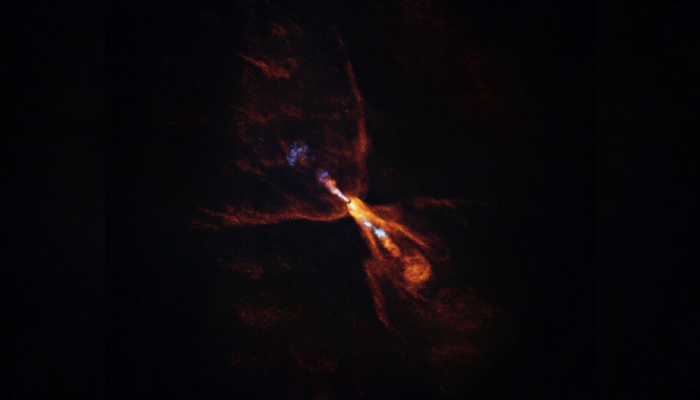For the first time, astronomers have directly observed the earliest signs of planet formation, marking a major step in understanding how solar systems like ours begin. A team of scientists observed a distant young star, HOPS-315, located 1,300 light years away in the Orion Nebula, where planets are just beginning to take shape. The discovery offers a rare look at the beginnings of a planetary system, one that mirrors the early stages of our own solar system.
HOPS-315: A Star Like Our Own
HOPS-315 is a young star that closely resembles our Sun in its infancy. It is surrounded by a protoplanetary disc — a massive, rotating ring of gas and dust. These discs serve as cosmic nurseries where planets are born. In this case, scientists found crucial evidence that tiny minerals are beginning to clump together inside the disc, marking the birth of planetesimals, the building blocks of planets.
Detecting the Earliest Signs
The discovery, detailed in the journal Nature, began with data from the James Webb Space Telescope (JWST). The JWST first identified chemical signals from silicon monoxide, a key ingredient in planetary formation. These signals indicated that minerals in the disc were starting to form crystals.
To locate the source of these minerals, scientists turned to the Atacama Large Millimetre/submillimetre Array (ALMA) in Chile. This telescope pinpointed the formation zone to a small region of the disc, similar to the asteroid belt in our own solar system. These findings suggest that the process forming Earth and Jupiter might be repeating itself in deep space.
Read: Starliner Delayed Until 2026 After Thruster Failures
Building Planets from Dust
Planetary formation begins when high-temperature minerals crystallize within the protoplanetary disc. These minerals slowly gather into clumps, which snowball into kilometre-sized objects called planetesimals. Over time, these objects may evolve into full-fledged planets.
In our solar system, scientists believe that these early crystalline materials were preserved in ancient meteorites, serving as a record of the planet-forming process. The new observations of HOPS-315 offer a rare chance to witness this process as it unfolds.
A Glimpse Into Our Past
Melissa McClure, the study’s lead author from Leiden University, described the moment as historic. “For the first time, we have identified the earliest moment when planet formation is initiated around a star other than our Sun,” she said.
Co-author Merel van’t Hoff of Purdue University emphasized the connection to our own origins. “We’re seeing a system that looks like what our Solar System looked like when it was just beginning to form,” van’t Hoff noted. This discovery provides scientists with a unique opportunity to study the conditions that may have given rise to Earth and its neighbors.
Why This Matters
This breakthrough helps scientists test long-standing theories about planet formation. It supports the idea that the ingredients for planets, such as silicon-based crystals, begin forming at very early stages in a star’s life. By studying HOPS-315, astronomers can track how those tiny grains of dust evolve into massive planets over millions of years.
Looking Forward
The research team plans to continue monitoring HOPS-315 and other similar systems. Future observations may confirm whether the same materials observed now go on to form solid, planet-like bodies. The use of both JWST and ALMA showcases the power of combining space-based and ground-based instruments to answer deep questions about our universe.
This discovery is not only a technical achievement but also a step toward understanding how we came to be. By watching the birth of a solar system, we glimpse the process that once gave rise to our own world — a powerful reminder of our connection to the stars.
Follow us on Instagram, YouTube, Facebook,, X and TikTok for latest updates
